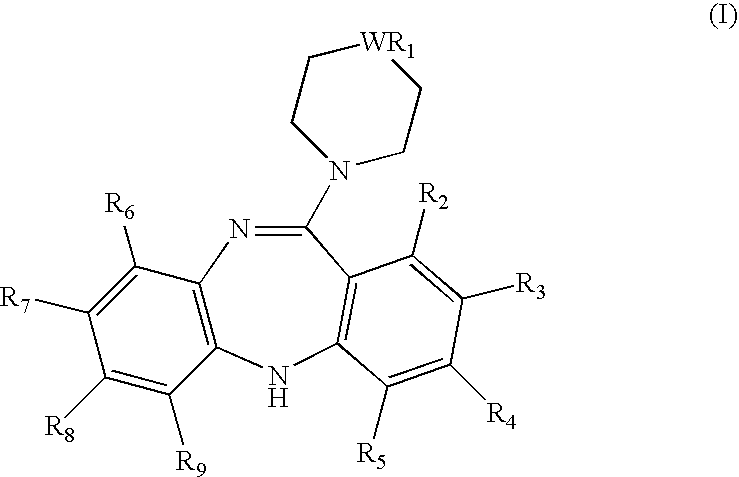Compositions and methods for increasing insulin sensitivity
a technology applied in the field of compositions and methods for the treatment of insulin related disorders, can solve the problems of serious health complications/consequences, death, and deterioration of life quality, and achieve the effect of effective insulin use, inability to make either sufficient or insufficient insulin
- Summary
- Abstract
- Description
- Claims
- Application Information
AI Technical Summary
Benefits of technology
Problems solved by technology
Method used
Image
Examples
example 1
Use of Zonisamide
[0177] Individuals taking insulin are identified. Each individual is instructed to take one 25 mg tablet of zonisamide on a daily basis, in addition to the insulin therapy.
[0178] The individuals are monitored for a period of months. It is recommended that the dosage be adjusted so that each individual remains sensitive to their dose of insulin and to maintain a healthy blood sugar level; thus the insulin levels may have to be decreased.
[0179] The dosage of zonisamide can be from about 25 mg to about 800 mg per day, generally given once per day or divided (e.g., equally) into multiple doses. Preferably, the dose is from about 100 mg to about 600 mg per day, more preferably, the dose is from about 200 mg to about 400 mg per day. However, it may be necessary to use dosages outside these ranges. Zonisamide tablets are usually made and marketed in 25 mg, 50 mg, and 100 mg doses. Individual tablets, or combination of tablets can be used to achieve the desired dosing. T...
example 2
Use of Topiramate
[0180] Individuals taking insulin are identified. Each individual is instructed to take one 25 mg tablet of topiramate on a daily basis, in addition to the insulin therapy.
[0181] The individuals are monitored for a period of months. It is recommended that the dosage be adjusted so that each remains sensitive to their current dosing scheme of insulin.
[0182] The dosage of topiramate can be from about 25 mg to about 1600 mg, preferably from about 50 mg to about 600 mg, more preferably from about 100 mg to about 400 mg. However, it may be necessary to use dosages outside these ranges.
[0183] Alternatively, upon the administration of the topiramate, the dosing scheme of the individual's insulin is reduced by 10%. As this reduction in insulin, in combination with topiramate, will not adversely impact the individual, lower doses of insulin will be effective for maintaining the individual's desired blood sugar levels and the risk that the individual will develop insulin ...
example 3
Combination of Zonisamide and Mitrazepine
[0184] Individuals taking insulin are identified. Each individual's dosing scheme for insulin is noted as well as the resulting blood sugar of the individual from the particular doses of insulin.
[0185] Each individual is instructed to take one tablet of zonisamide on a daily basis, in addition to one tablet of mitrazepine on a daily basis, and the individual's dosing scheme for insulin is reduced gradually over time. Initially, the drugs are administered as follows: 8 mg mitrazepine and 64 mg zonisamide; or 16 mg mitrazepine and 128 mg zonisamide; or 32 mg mitrazepine and 252 mg zonisamide; generally with an mitrazepine / zonisamide ratio of 1:8. Over a period of weeks, the individual's dosing scheme of insulin is reduced by 5%, then 10, 20, 30, 40, 50% and so on. During this reduction in administered insulin levels, the individual's blood sugar levels are monitored. The reduction in insulin level is continued until the individual's blood sug...
PUM
| Property | Measurement | Unit |
|---|---|---|
| resistance | aaaaa | aaaaa |
| insulin resistance | aaaaa | aaaaa |
| concentration | aaaaa | aaaaa |
Abstract
Description
Claims
Application Information
 Login to View More
Login to View More - R&D
- Intellectual Property
- Life Sciences
- Materials
- Tech Scout
- Unparalleled Data Quality
- Higher Quality Content
- 60% Fewer Hallucinations
Browse by: Latest US Patents, China's latest patents, Technical Efficacy Thesaurus, Application Domain, Technology Topic, Popular Technical Reports.
© 2025 PatSnap. All rights reserved.Legal|Privacy policy|Modern Slavery Act Transparency Statement|Sitemap|About US| Contact US: help@patsnap.com

